-
 Bitcoin
Bitcoin $87,458.1485
-6.98% -
 Ethereum
Ethereum $2,411.1941
-8.97% -
 Tether USDt
Tether USDt $0.9987
-0.12% -
 XRP
XRP $2.2068
-8.67% -
 BNB
BNB $608.7729
-3.78% -
 Solana
Solana $139.0659
-8.19% -
 USDC
USDC $0.9999
0.00% -
 Dogecoin
Dogecoin $0.2030
-9.31% -
 Cardano
Cardano $0.6487
-9.18% -
 TRON
TRON $0.2281
-6.93% -
 Chainlink
Chainlink $14.6959
-8.73% -
 Toncoin
Toncoin $3.4783
-2.17% -
 Avalanche
Avalanche $20.9265
-8.85% -
 Sui
Sui $2.7900
-7.03% -
 Stellar
Stellar $0.2764
-11.71% -
 Litecoin
Litecoin $111.5054
-8.01% -
 UNUS SED LEO
UNUS SED LEO $8.8598
-6.88% -
 Shiba Inu
Shiba Inu $0.0...01375
-4.00% -
 Hedera
Hedera $0.1842
-12.94% -
 MANTRA
MANTRA $7.6601
-5.70% -
 Polkadot
Polkadot $4.4138
-4.83% -
 Hyperliquid
Hyperliquid $19.5797
-6.50% -
 Ethena USDe
Ethena USDe $0.9991
-0.13% -
 Bitcoin Cash
Bitcoin Cash $282.1109
-7.50% -
 Dai
Dai $0.9995
-0.02% -
 Bitget Token
Bitget Token $4.2273
-10.86% -
 Uniswap
Uniswap $7.7932
-5.87% -
 Monero
Monero $218.1754
-6.16% -
 NEAR Protocol
NEAR Protocol $2.9053
-10.90% -
 Pepe
Pepe $0.0...07898
-8.66%
How scalable is the Litentry LIT coin network?
The Litentry LIT Coin Network employs a suite of scalability features, including data sharding, cross-chain interoperability, rollup technology, parallel processing, and smart contract optimization, enabling it to handle high throughput, minimize latency, and reduce transaction costs.
Dec 31, 2024 at 11:31 pm
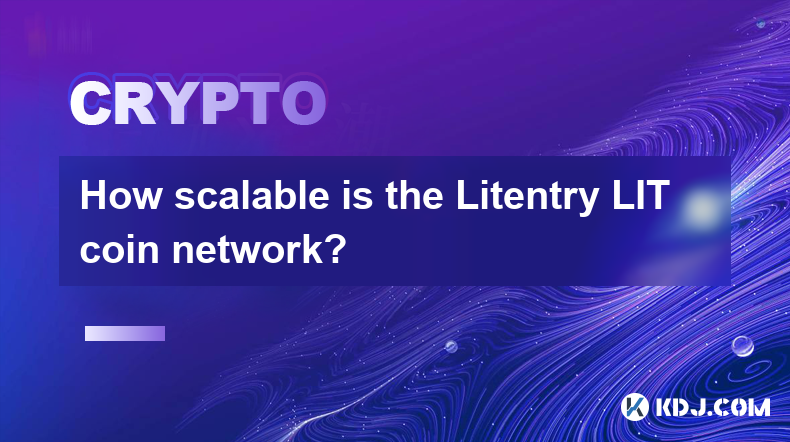
Key Points:
- Overview of the Litentry LIT Coin Network and its Scalability Features
- Analysis of Litentry's Scalability Solutions and their Benefits
- Comparative Analysis of Litentry with Other Scalable Blockchain Networks
- Future Development Roadmap and Planned Scalability Enhancements
Overview of the Litentry LIT Coin Network
Litentry is a decentralized identity aggregation protocol that connects decentralized identifiers (DIDs) with off-chain data sources. It aims to address the challenges of data privacy, interoperability, and scalability in decentralized identity systems.
The LIT Coin is the native utility token of the Litentry network. It is used for:
- Paying for transaction fees
- Staking to participate in network validation and governance
- Incentivizing data providers to share their off-chain data
- Purchasing premium services on the Litentry platform
Scalability Features of the Litentry LIT Coin Network
The Litentry team recognizes the importance of scalability for the long-term success of the network. To address this, they have implemented the following scalability features:
- Data Sharding: LIT Coin data is partitioned into multiple shards, which are stored on different nodes. This distributes the load across the network and improves overall performance.
- Cross-Chain Interoperability: LIT Coin is designed to be cross-chain interoperable, allowing it to process requests from other blockchains and scale horizontally.
- Rollup Technology: LIT Coin utilizes Layer 2 rollup technology to combine multiple transactions into a single block, which is then processed by the network. This significantly reduces the network's computational overhead.
- Parallel Processing: LIT Coin employs parallel processing techniques to distribute computation tasks across multiple CPUs or clusters, improving efficiency and minimizing latency.
- Smart Contract Optimization: The LIT Coin smart contracts are meticulously optimized to minimize resource consumption and gas fees, further contributing to network scalability.
Comparative Analysis with Other Scalable Blockchain Networks
The scalability of Litentry LIT Coin compares favorably with other notable blockchain networks:
Network Throughput: Litentry's sharding and parallel processing capabilities allow it to achieve high throughput rates for data requests and transactions.
Latency: The rollup technology and cross-chain interoperability enable Litentry to minimize latency, ensuring fast response times for users and seamless cross-blockchain interactions.
Cost-Effectiveness: Litentry's smart contract optimizations and efficient use of resources result in low transaction fees, making it a cost-effective solution for decentralized identity management.
Future Scalability Enhancements
As technology advances, the Litentry team is actively exploring and implementing new solutions to enhance scalability:
- Adaptive Sharding: Litentry plans to introduce adaptive sharding mechanisms that dynamically adjust the number of shards based on network load.
- Quantum Computing Integration: The team is researching the potential of quantum computing to accelerate processing and further enhance scalability.
- Offloading to Edge Nodes: LIT Coin will explore offloading some data processing tasks to edge nodes, distributing the load and reducing latency.
FAQs
Q: What is the current transaction speed of the Litentry LIT Coin network?
A: Depending on network conditions, Litentry can process a high volume of transactions per second, making it highly responsive for data requests and identity-related interactions.
Q: How does Litentry compare to other decentralized identity solutions in terms of scalability?
A: Litentry's combination of sharding, cross-chain interoperability, and rollup technology positions it among the most scalable decentralized identity solutions available.
Q: What factors contribute to the low transaction fees on the Litentry LIT Coin network?
A: Litentry's smart contract optimizations, along with its use of Layer 2 rollups, minimize computational overhead and gas costs, making transactions highly cost-effective.
Q: What are the advantages of data sharding in the Litentry LIT Coin network?
A: Data sharding helps to distribute the network load, enhances security by preventing single points of failure, and improves the overall performance and scalability of the Litentry platform.
Q: How does Litentry's parallel processing contribute to network scalability?
A: By parallelizing computation tasks, Litentry can process multiple data requests and transactions simultaneously, reducing latency and improving the overall throughput of the network.
Disclaimer:info@kdj.com
The information provided is not trading advice. kdj.com does not assume any responsibility for any investments made based on the information provided in this article. Cryptocurrencies are highly volatile and it is highly recommended that you invest with caution after thorough research!
If you believe that the content used on this website infringes your copyright, please contact us immediately (info@kdj.com) and we will delete it promptly.
- Mutuum Finance (MUTM): A New Solana (SOL) Altcoin Priced Under $0.02 Targets 10,000% ROI Chance
- 2025-02-26 00:10:30
- Ftt Token Surged 30% As Former Ftx CEO sam Bankman-Fried (SBF) returned to social media
- 2025-02-26 00:10:30
- Franklin Templeton Takes Step Toward Solana ETF Launch
- 2025-02-26 00:10:30
- Top 5 Cryptocurrencies to Buy in February 2023 for the Best Gains
- 2025-02-26 00:05:29
- Remittix: The New Altcoin with Real-World Solutions
- 2025-02-26 00:05:29
- Best cryptos to buy now, according to Canadian traders
- 2025-02-26 00:05:29
Related knowledge
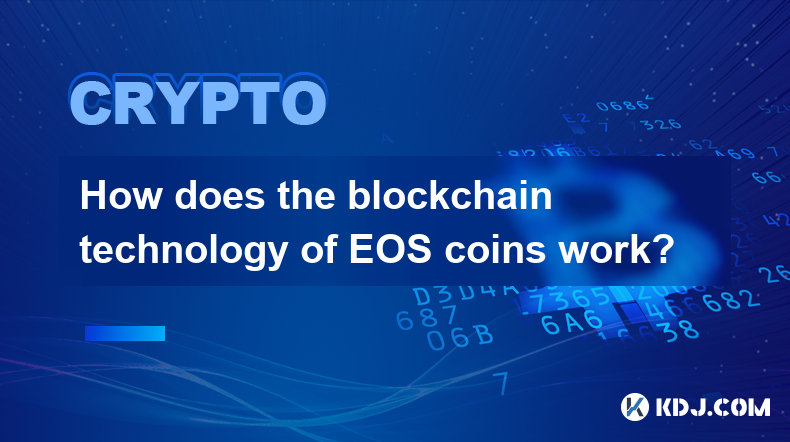
How does the blockchain technology of EOS coins work?
Feb 25,2025 at 11:13pm
Key PointsEOS is a blockchain platform that provides a high-throughput and scalable solution for decentralized applications.EOS uses a delegated proof-of-stake (DPoS) consensus mechanism to elect block producers and maintain the blockchain.EOSIO, the open-source software that powers EOS, offers a range of developer tools and features to facilitate the c...

What are the long-term investment risks of Bitcoin?
Feb 22,2025 at 05:30pm
Key PointsVolatility and price fluctuationsRegulatory uncertaintySecurity risksCompetition from altcoinsMarket manipulation and scamsTransaction feesEnvironmental concernsLong-Term Investment Risks of BitcoinVolatility and Price FluctuationsBitcoin's high volatility is a double-edged sword. While it has the potential to generate substantial returns, it ...
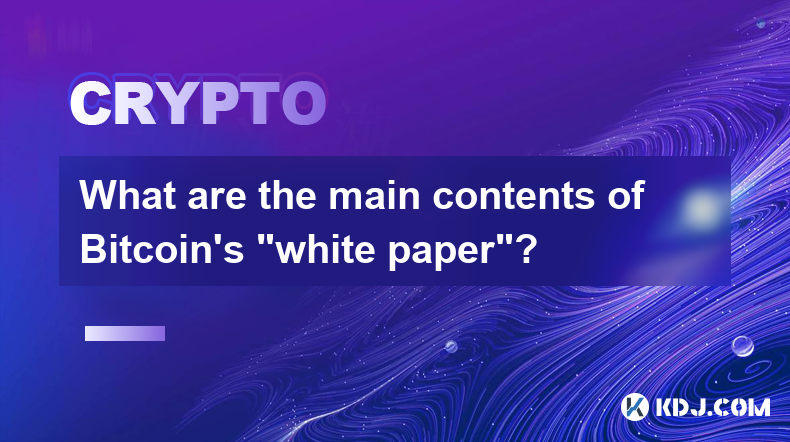
What are the main contents of Bitcoin's "white paper"?
Feb 21,2025 at 04:36am
Key Points:Understanding Bitcoin's Genesis: The White Paper's IntroductionA Decentralized Digital Currency: Bitcoin's Core ConceptBlockchain Technology: The Foundation of Bitcoin's Immutable LedgerProof-of-Work: Securing Bitcoin's NetworkThe Design of Bitcoin's Currency: Issuance, Scarcity, and DivisibilityBitcoin's Potential Applications and Future Pro...

How does Bitcoin's distributed ledger ensure consistency?
Feb 22,2025 at 10:06pm
Key Points:Bitcoin employs a distributed ledger, also known as a blockchain, to maintain a tamper-proof and consistent record of transactions.The blockchain is a decentralized network of computers that collectively validate and store transaction data.Bitcoin's distributed ledger ensures consistency through consensus mechanisms and cryptographic algorith...
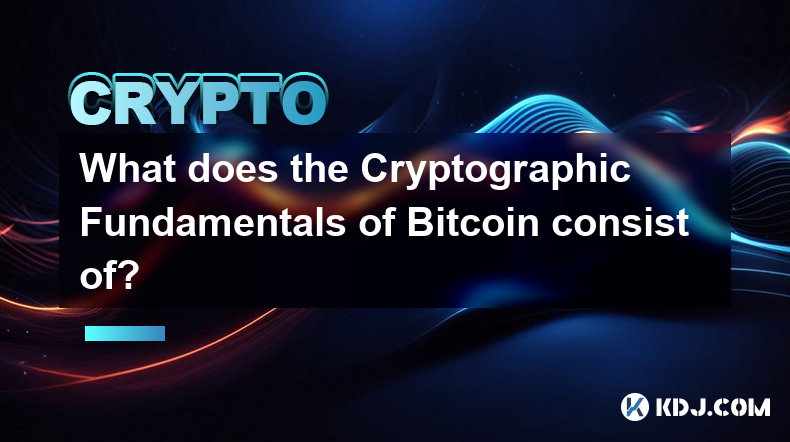
What does the Cryptographic Fundamentals of Bitcoin consist of?
Feb 21,2025 at 12:06pm
Key PointsUnderstanding the cryptographic algorithms used in BitcoinFamiliarization with the Bitcoin blockchain and its underlying mechanicsExamination of the security measures that protect Bitcoin from attackAnalysis of the decentralized nature of Bitcoin and its implicationsDiscussion of the scalability and transaction fee issues associated with Bitco...
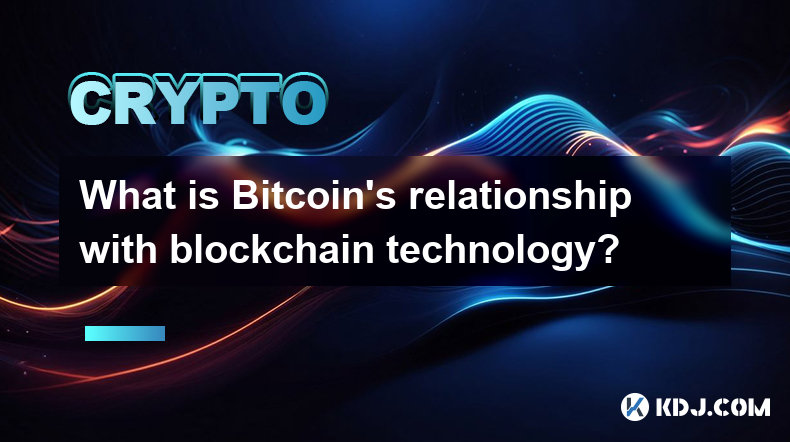
What is Bitcoin's relationship with blockchain technology?
Feb 22,2025 at 07:00pm
Bitcoin's Intertwined Relationship with Blockchain TechnologyKey Points:Definition of blockchain technology and its decentralized natureBitcoin's utilization of blockchain for secure and immutable transactionsThe role of blockchain in verifying and confirming transactionsEvolution of blockchain technology beyond Bitcoin's cryptocurrency applicationsUnde...

How does the blockchain technology of EOS coins work?
Feb 25,2025 at 11:13pm
Key PointsEOS is a blockchain platform that provides a high-throughput and scalable solution for decentralized applications.EOS uses a delegated proof-of-stake (DPoS) consensus mechanism to elect block producers and maintain the blockchain.EOSIO, the open-source software that powers EOS, offers a range of developer tools and features to facilitate the c...

What are the long-term investment risks of Bitcoin?
Feb 22,2025 at 05:30pm
Key PointsVolatility and price fluctuationsRegulatory uncertaintySecurity risksCompetition from altcoinsMarket manipulation and scamsTransaction feesEnvironmental concernsLong-Term Investment Risks of BitcoinVolatility and Price FluctuationsBitcoin's high volatility is a double-edged sword. While it has the potential to generate substantial returns, it ...

What are the main contents of Bitcoin's "white paper"?
Feb 21,2025 at 04:36am
Key Points:Understanding Bitcoin's Genesis: The White Paper's IntroductionA Decentralized Digital Currency: Bitcoin's Core ConceptBlockchain Technology: The Foundation of Bitcoin's Immutable LedgerProof-of-Work: Securing Bitcoin's NetworkThe Design of Bitcoin's Currency: Issuance, Scarcity, and DivisibilityBitcoin's Potential Applications and Future Pro...

How does Bitcoin's distributed ledger ensure consistency?
Feb 22,2025 at 10:06pm
Key Points:Bitcoin employs a distributed ledger, also known as a blockchain, to maintain a tamper-proof and consistent record of transactions.The blockchain is a decentralized network of computers that collectively validate and store transaction data.Bitcoin's distributed ledger ensures consistency through consensus mechanisms and cryptographic algorith...

What does the Cryptographic Fundamentals of Bitcoin consist of?
Feb 21,2025 at 12:06pm
Key PointsUnderstanding the cryptographic algorithms used in BitcoinFamiliarization with the Bitcoin blockchain and its underlying mechanicsExamination of the security measures that protect Bitcoin from attackAnalysis of the decentralized nature of Bitcoin and its implicationsDiscussion of the scalability and transaction fee issues associated with Bitco...

What is Bitcoin's relationship with blockchain technology?
Feb 22,2025 at 07:00pm
Bitcoin's Intertwined Relationship with Blockchain TechnologyKey Points:Definition of blockchain technology and its decentralized natureBitcoin's utilization of blockchain for secure and immutable transactionsThe role of blockchain in verifying and confirming transactionsEvolution of blockchain technology beyond Bitcoin's cryptocurrency applicationsUnde...
See all articles

















































































